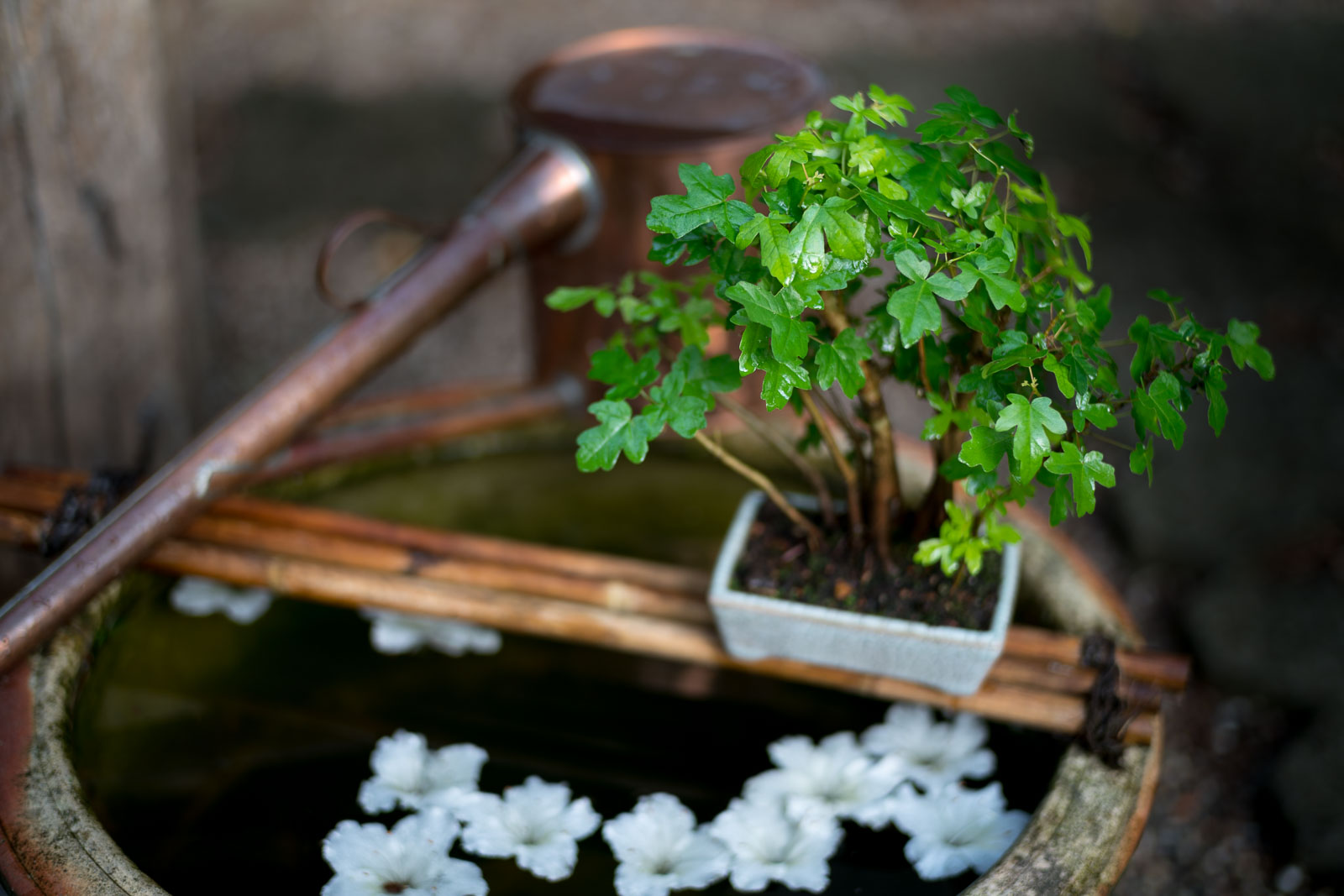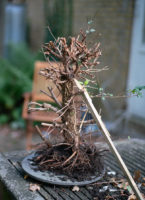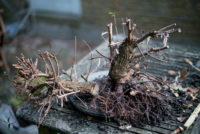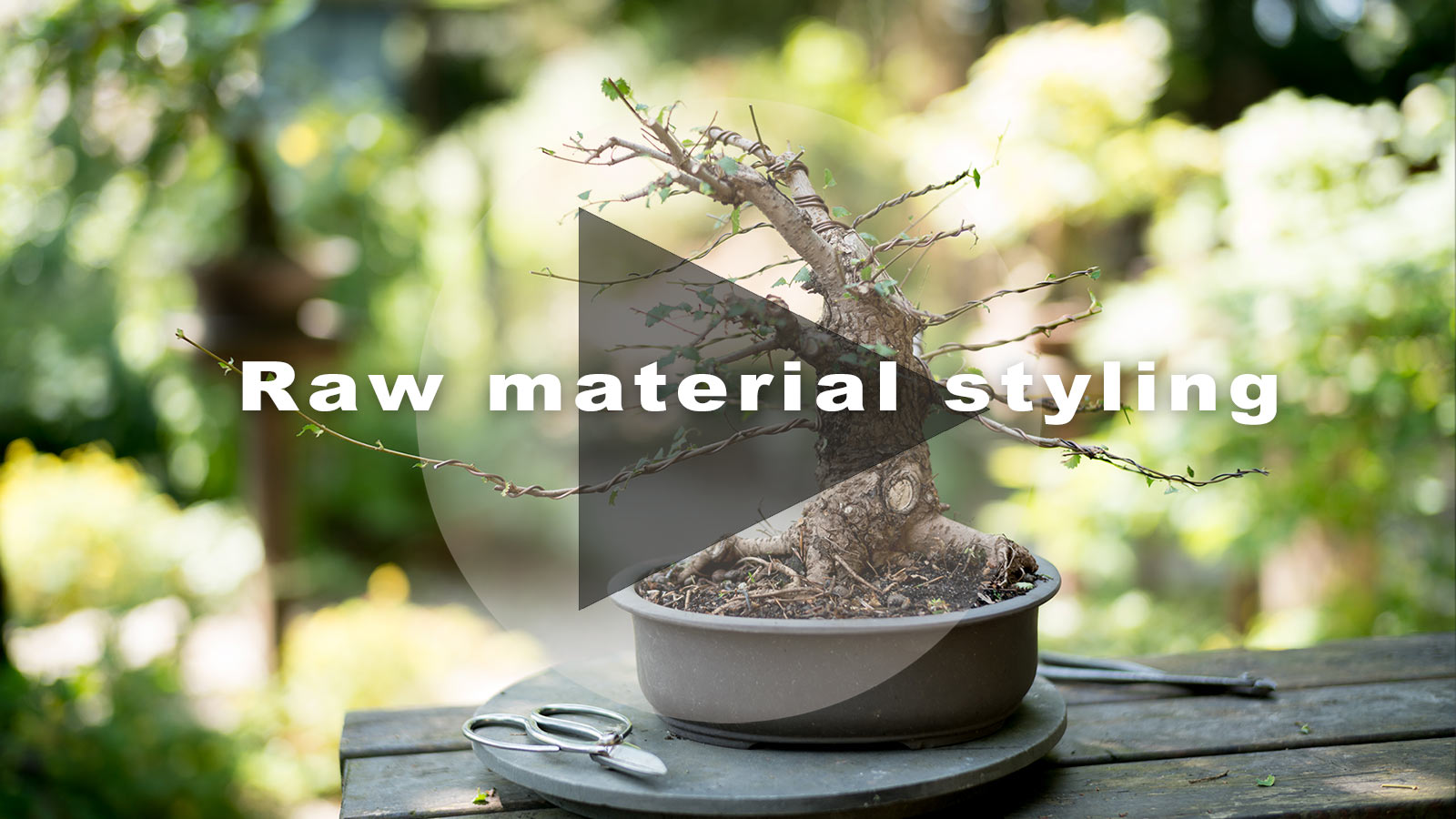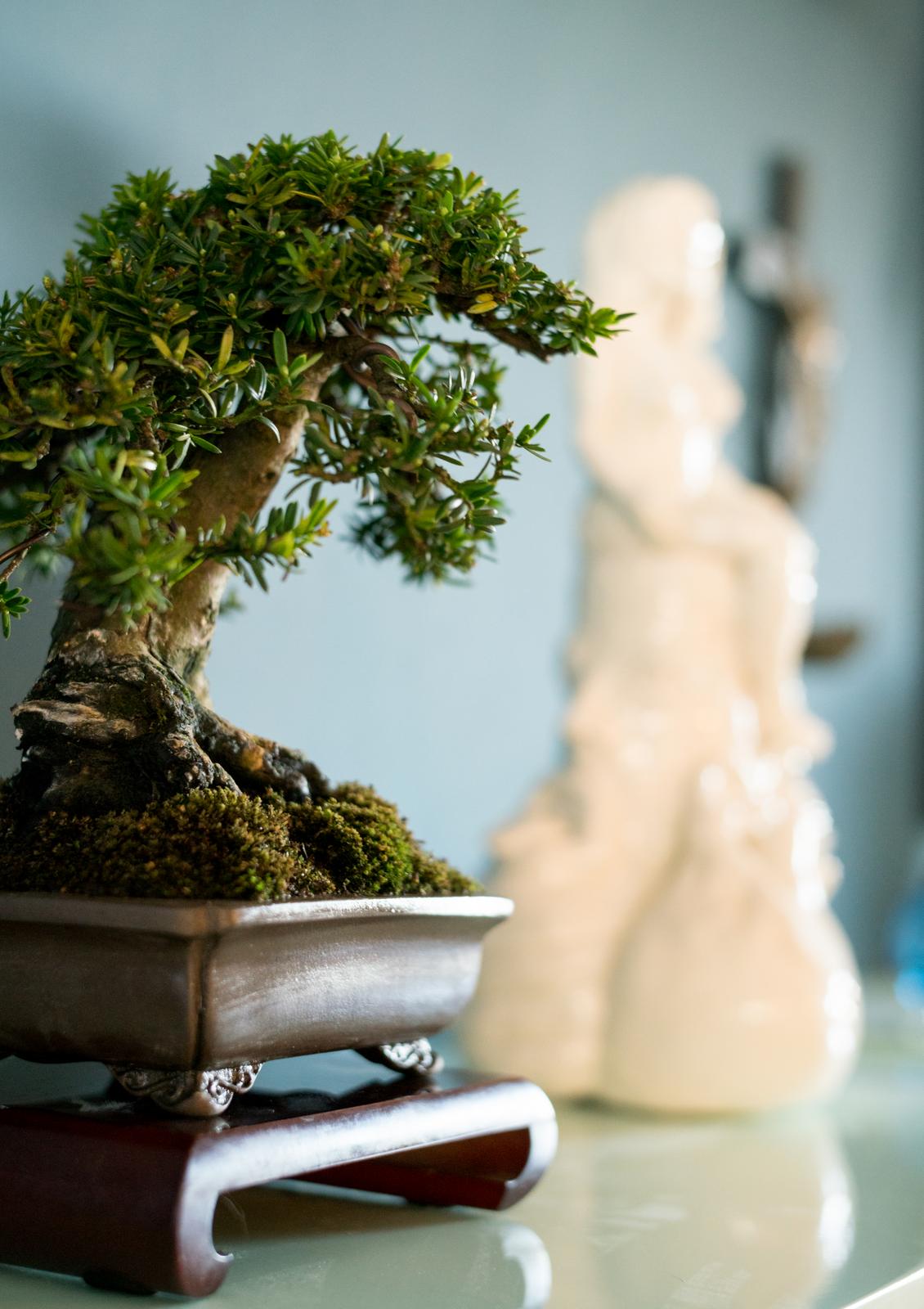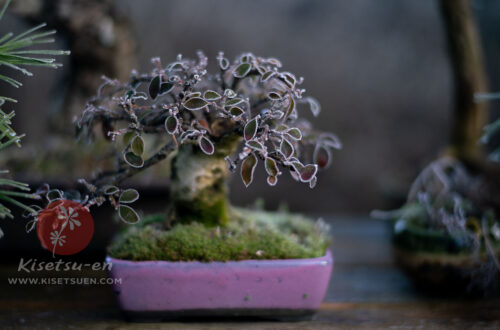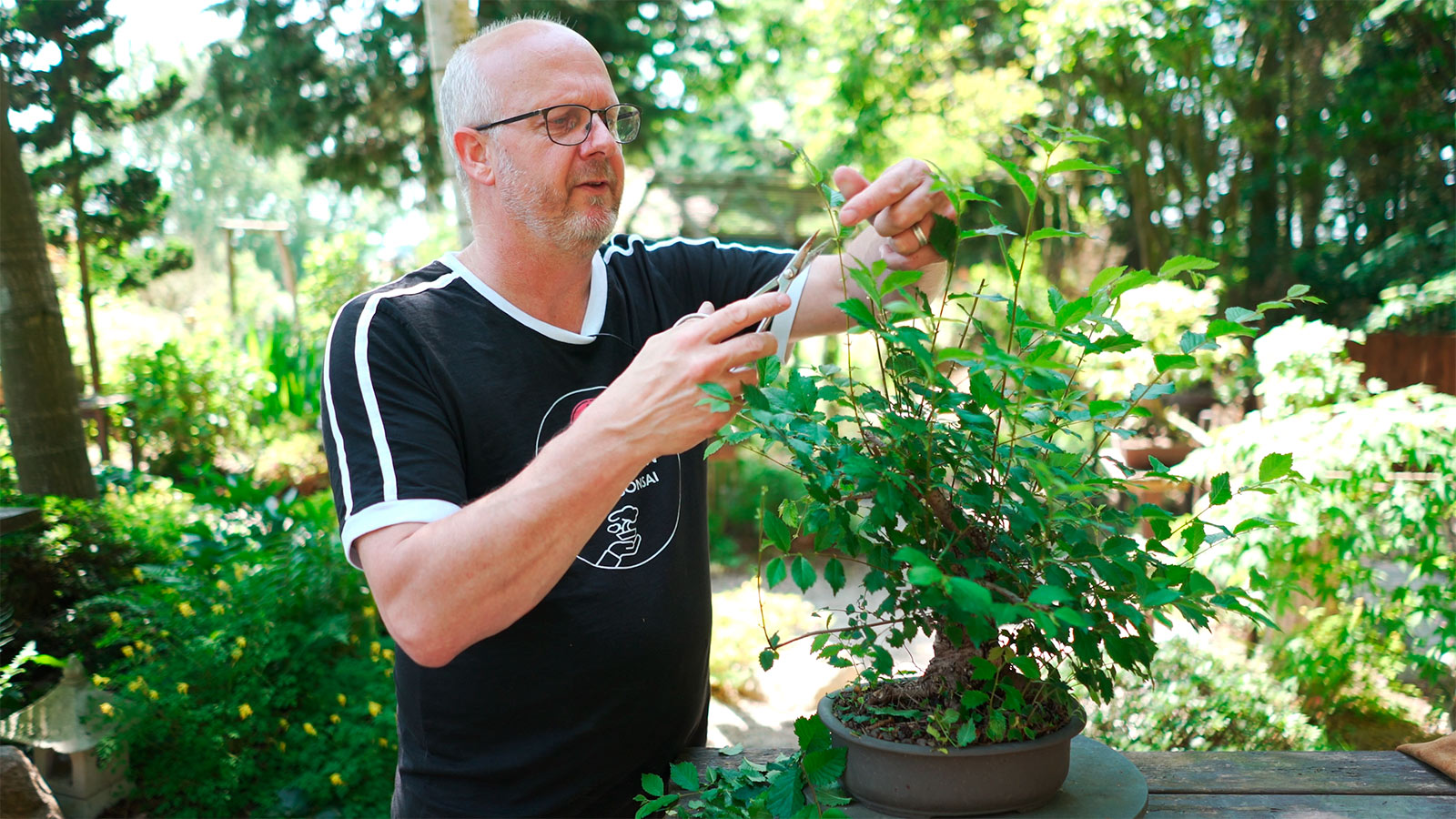
Finding the bonsai behind the leaves
Raw material can be a challenge. Finding the bonsai behind the leaves is not always easy, and early selections are a good idea. Setting the bones of the tree for the future.
Tree gift
Last year I was given a tree from a friend, who had to downscale his collection because he was moving to a smaller place. The tree is an Ulmus minor, Field elm, grown from a cutting taken years ago.
I decided right away to reduce the height of the tree and repot it because I received it bare-rooted lifted from a raised bed. Ulmus is very forgiving trees to work with, and this small-leaved variety is good for bonsai growing. The specie here also has the characteristics of the cork bark types.
I removed close to all branches when the tree was repotted, being sure new ones would easily be created in spring. And it happened. Now we enter the middle of summer and a semi-dormant period for many trees. This is a perfect time for defoliating and wiring a deciduous bonsai and finding the bonsai behind the leaves.

A tree for the future
Therefore it was time to set the future branches and bones from which to build up the tree in the coming years. It is drastic pruning earlier this year that produced the new growth. Elms are fast growers, but still, it will take some years to build up a mature ramification that convincingly will make the impression of an old tree.
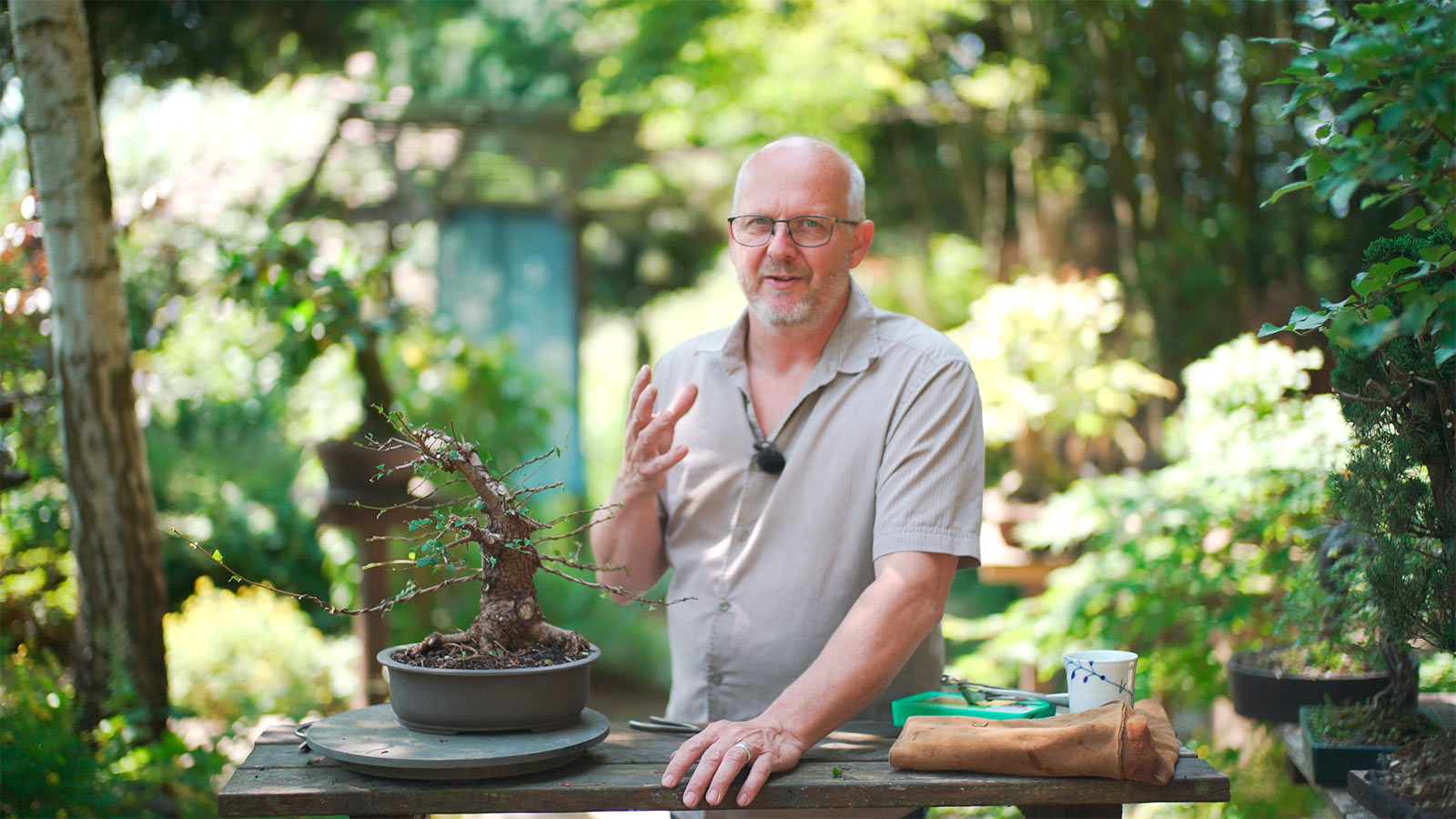
You can watch 45 minutes video on how the branch selection is carried out, and set for the future in this week’s episode at Kisetsu-en Online Bonsai.
In this 45 min. episode I carefully take you through the steps of
- defoliation
- semi-dormancy control
- selecting the front
- branch selection
- setting the bones of a future bonsai
- design aspects
- wiring techniques
- vision of the future shape
